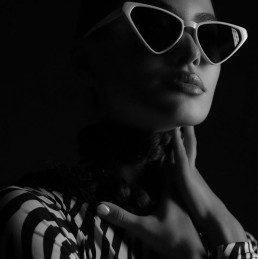The role of masons in fashion industry
Masons, specifically in the context of fashion, often refer to fashion houses or ateliers that specialize in haute couture and bespoke clothing. Their role in the fashion industry is significant and multifaceted:
1. High-Quality Craftsmanship: Masons are known for their exceptional craftsmanship and attention to detail. They create custom garments that fit the client perfectly, often using luxurious fabrics and intricate techniques.
2. Personalization: Masons provide personalized services, allowing clients to influence the design process. This bespoke approach caters to individual tastes and preferences, making each piece unique.
3. Fashion Innovation: Many renowned designers start as masons, honing their skills in tailoring and garment construction. This foundation allows them to innovate and push boundaries in fashion design.
4. Preservation of Tradition: Masons often uphold traditional techniques and skills passed down through generations. This preservation is vital for maintaining the heritage and artistry of fashion.
5. Influence on Trends: The styles and designs created by masons can have a significant impact on broader fashion trends. Haute couture collections often set the stage for what becomes popular in ready-to-wear lines.
6. Collaboration with Designers: Masons frequently collaborate with fashion designers to bring their visions to life. This partnership is crucial for translating creative concepts into wearable art.
7. Luxury Market: Masons cater to the luxury market, attracting high-profile clients and celebrities. Their work often symbolizes status and exclusivity within the fashion industry.
Overall, masons play an essential role in shaping the landscape of fashion, blending artistry with technical expertise to create garments that are both beautiful and timeless.
Fashion trends in 2024 In The World
Fashion trends in 2024 are expected to be influenced by a combination of sustainability, technology, and a return to individual expression. Here are some key trends anticipated for the year:
1. Sustainable Fashion: Eco-friendly materials and practices will continue to be at the forefront, with more brands focusing on transparency, recycling, and upcycling to minimize environmental impact.
2. Tech-Infused Clothing: The integration of technology in fashion, such as smart textiles and wearable tech, will gain traction, offering functionality along with style.
3. Bold Colors and Patterns: A move towards vibrant colors and bold patterns is expected, with designers embracing expression through eclectic combinations and graphic prints.
4. Comfort and Versatility: With the rise of remote work and a shift in lifestyle, comfortable yet stylish clothing will dominate, including relaxed fits, loungewear, and versatile pieces that can be dressed up or down.
5. Nostalgic Aesthetics: Fashion will draw inspiration from past decades, particularly the 90s and early 2000s, reinterpreting vintage styles with a modern twist.
6. Gender Fluidity: The blurring of traditional gender lines in clothing will continue, with unisex collections and androgynous designs becoming more prevalent.
7. Artisanal and Handmade Elements: A focus on craftsmanship and unique details will emerge, with an appreciation for handmade and artisanal pieces that tell a story.
8. Statement Accessories: Accessories will play a crucial role, with oversized bags, bold jewelry, and unique footwear becoming key elements to elevate outfits.
9. Layering Techniques: Creative layering will be popular, allowing for versatility and personal expression, particularly in transitional seasons.
10. Cultural Influences: Fashion will increasingly celebrate diverse cultural influences, integrating traditional elements and motifs into contemporary designs.
These trends reflect a growing desire for authenticity, creativity, and sustainability in fashion, catering to a more conscious consumer base.

